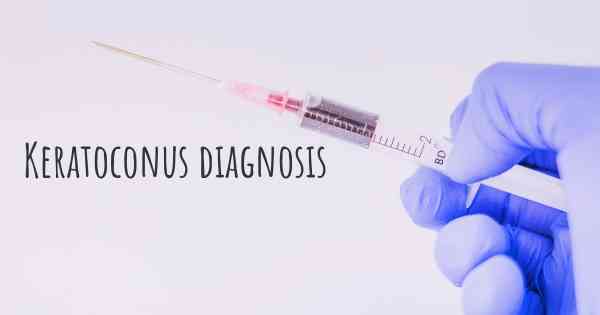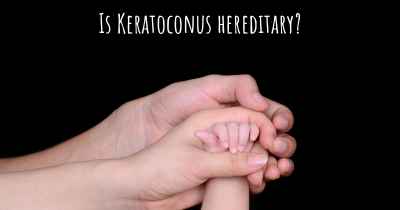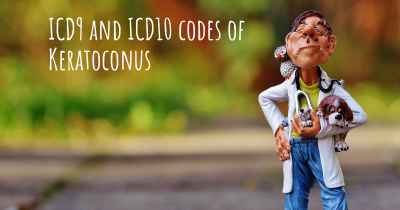How is Keratoconus diagnosed?
See how Keratoconus is diagnosed. Which specialists are essential to meet, what tests are needed and other useful information for the diagnosis of Keratoconus

How is Keratoconus Diagnosed?
Keratoconus is a progressive eye disorder that affects the shape and structure of the cornea, leading to visual impairment. Diagnosing keratoconus involves a comprehensive eye examination performed by an ophthalmologist or optometrist. The process typically includes several tests and evaluations to assess the cornea's shape, thickness, and visual acuity.
1. Medical History and Symptoms
The diagnostic process usually begins with a detailed discussion of the patient's medical history and symptoms. The doctor will inquire about any family history of eye conditions, previous eye surgeries, or the use of contact lenses. They will also ask about specific symptoms such as blurry vision, frequent changes in prescription, sensitivity to light, or difficulty with night vision. This information helps the doctor understand the patient's condition better and guides further examinations.
2. Visual Acuity Test
The visual acuity test is a standard eye chart examination that measures how well a person can see at various distances. The patient is asked to read letters or symbols from a chart positioned at a specific distance. This test helps determine the extent of visual impairment caused by keratoconus.
3. Refraction Test
A refraction test is conducted to determine the patient's eyeglass prescription. The doctor uses a phoropter, a device with multiple lenses, and asks the patient to look through it while reading letters or viewing images. By adjusting the lenses, the doctor can identify the prescription that provides the clearest vision. In keratoconus, the prescription often changes frequently due to the irregular shape of the cornea.
4. Corneal Topography
Corneal topography is a crucial test for diagnosing keratoconus. It maps the shape and curvature of the cornea's surface using a special instrument called a corneal topographer. The patient places their chin on a rest, and the topographer captures detailed images of the cornea. These images help identify any irregularities or steepening of the cornea associated with keratoconus.
5. Slit-Lamp Examination
A slit-lamp examination allows the doctor to examine the cornea, iris, and other structures of the eye under high magnification. The patient rests their chin on a chin rest, and the doctor uses a slit-lamp microscope to illuminate and examine the eye. This examination helps detect any thinning, scarring, or other abnormalities in the cornea that may indicate keratoconus.
6. Pachymetry
Pachymetry is a test used to measure the thickness of the cornea. It is performed using a pachymeter, a handheld device that emits ultrasound waves to measure corneal thickness. In keratoconus, the cornea tends to be thinner than normal in certain areas. Pachymetry helps determine the extent of corneal thinning and assists in diagnosing keratoconus.
7. Other Diagnostic Techniques
In some cases, additional diagnostic techniques may be employed to confirm the diagnosis of keratoconus. These may include:
- Corneal Biomicroscopy: This test uses a high-powered microscope to examine the cornea's surface and detect any abnormalities.
- Retinoscopy: Retinoscopy involves shining a light into the eye and observing the reflection to assess the eye's refractive error.
- Computerized Corneal Mapping: This advanced technique creates a detailed three-dimensional map of the cornea, aiding in the diagnosis and monitoring of keratoconus.
- Anterior Segment Optical Coherence Tomography (OCT): OCT uses light waves to capture cross-sectional images of the cornea, providing detailed information about its structure.
It is important to note that the specific diagnostic process may vary depending on the healthcare provider and the patient's individual circumstances. Early detection and diagnosis of keratoconus are crucial for timely management and treatment.
Posted Mar 1, 2017 by Shell 1000
Posted Mar 1, 2017 by Kinjal 1100
Posted Mar 1, 2017 by Gary 500
Corneal Exam / Biomicroscopy
Refractive or Optometric exam
Pachymetry (Corneal thickness)
Anterior OCT (Tomography of anterior segment of the eye)
Optometrists & Ophthalmologists are main involved for diagnosis
Posted Mar 7, 2017 by Jose Luis 1120
Posted Nov 2, 2017 by Terry 3050
Posted Apr 23, 2017 by José Luís Tomé Gonçalves 1480








